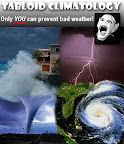
Excerpt via Watts Up With That: On September 8, 1900, a hurricane struck Galveston. Winds estimated at 140 mph swept over the island, leaving devastation in their wake. After the storm surge of 15.7 feet subsided, Galvestonians left their shelters to find 6,000 of the city’s 37,000 residents dead and more than 3,600 buildings totally destroyed.
The 1900 Storm is still considered to be the deadliest natural disaster in U.S. history. After the storm, Galveston constructed a seawall and raised the grade of the island to protect it from future hurricanes.
…for storm surge – FALSE
The Bathurst Bay Cyclone, also known as Tropical Cyclone Mahina, which struck Bathurst Bay, Australia on March 5, 1899, is generally credited with the world record for storm surge. The cyclone’s storm surge is variously listed at 13 – 14.6 meters (43 – 48 feet). The Category 5 cyclone was a monster–with sustained winds in excess of 175 mph and a central pressure between 880 and 914 mb. Mahina killed at least 307 people, mostly on pearling ships, and was the deadliest cyclone in Australian history. The eyewitness account of Mahina’s record storm surge was provided by Constable J. M. Kenny, who journeyed to Barrow Point on Bathurst Bay to investigate a crime on the day of the storm. While camped on a ridge 40 feet above sea level and 1/2 mile inland, Kenny’s camp was inundated by a storm wave, reaching waist-deep. On nearby Flinders Island, fish and dolphins were found on top of 15 meter (49 foot) cliffs. However, an analysis by Nott and Hayne (2000) found no eviden ce of storm-deposited debris higher than 3 – 5 meters above mean sea level in the region. They also cited two computer storm surge simulations of the cyclone that were unable to generate a surge higher than three meters.
Source: http://www.wunderground.com/hurricane/surge_world_records.asp
…for barometric pressure – FALSE
Hurricane Sandy had the lowest pressure ever recorded for any storm north of North Carolina at 943 millibars just before it came in from the sea on Monday afternoon and hit the New Jersey coast, however, it remained at the weakest level of hurricane throughout its tempestuous tirade through over 1,000 square miles of land.


